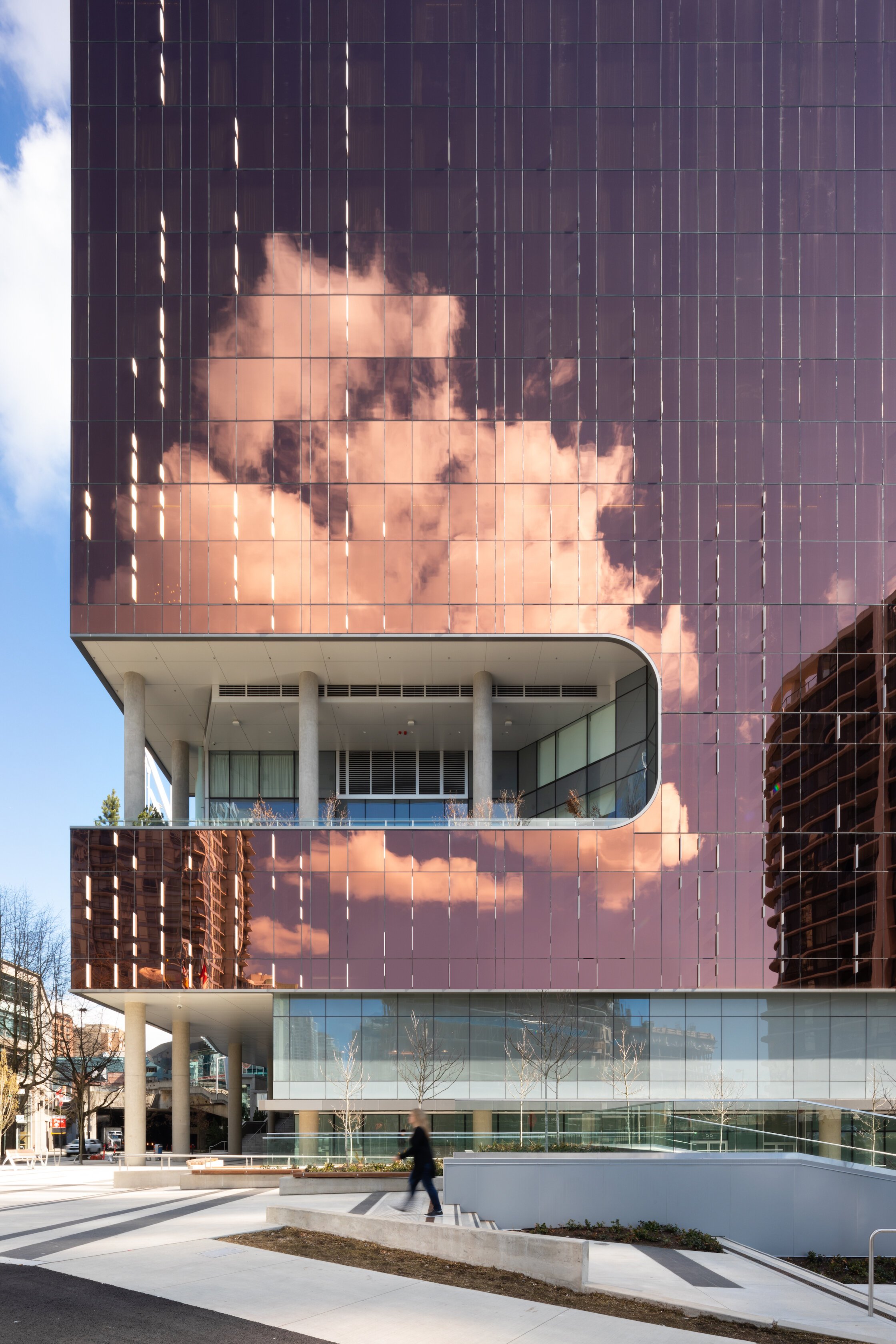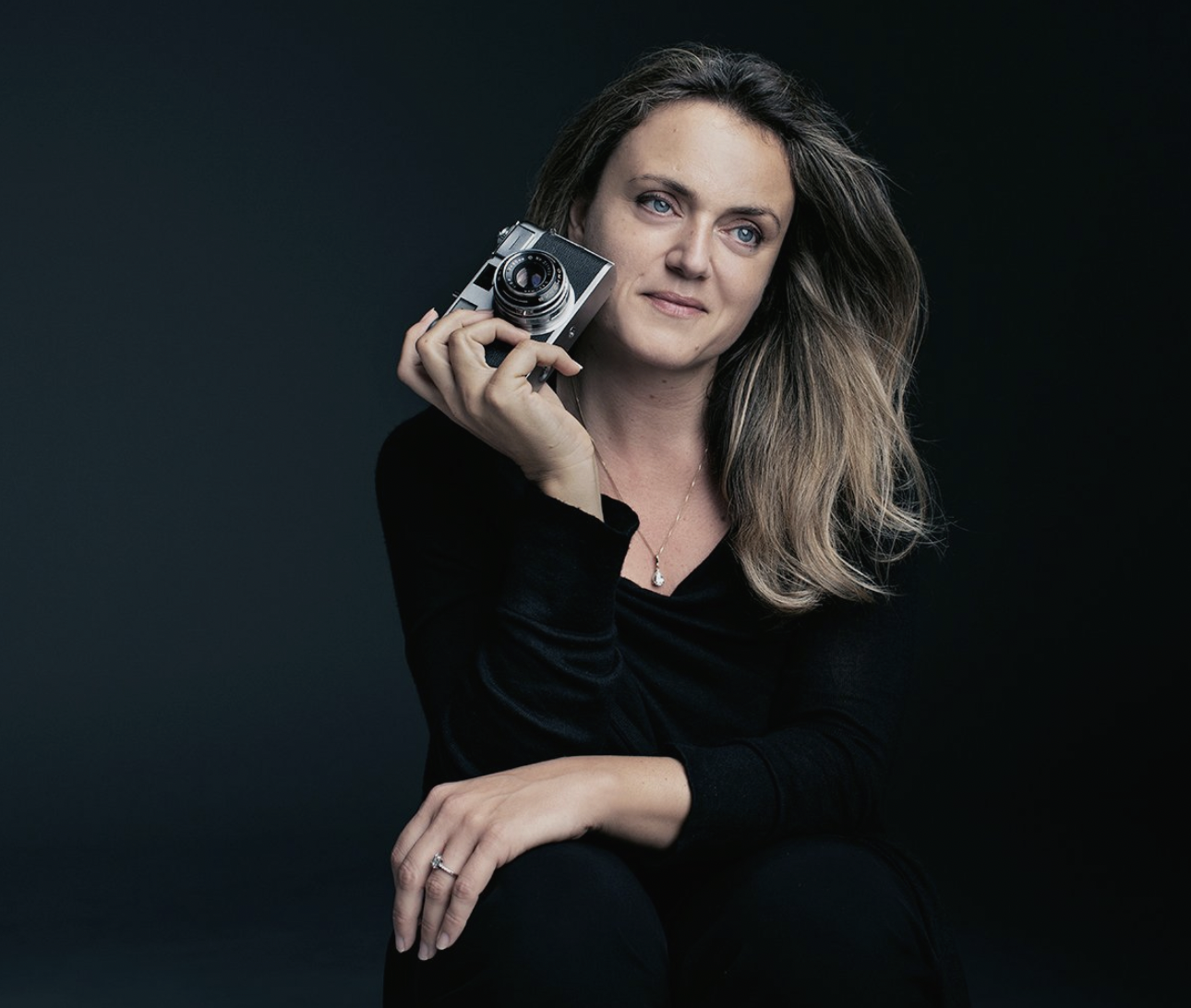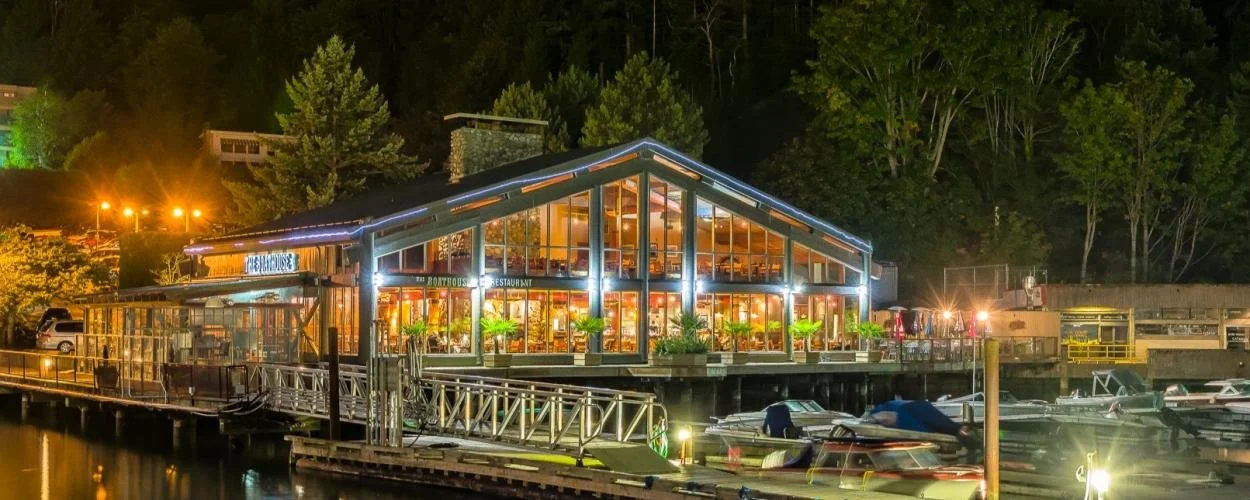Architectural photojournalist Ema Peter chases the decisive moment
New exhibition at West Vancouver Art Museum features a career-spanning selection of the local artist’s transfixing images
PARQ Vancouver, Ema Peter Photography, 2017. Designed by ADCF Architecture in collaboration with Architecture 49 and Arcadis IBI Group. Giclée on Dibond. Courtesy of Ema Peter Photography
West Vancouver Art Museum presents The Decisive Moment: Ema Peter to June 3 as part of the 2023 Capture Photography Festival
TO GET A sense of the intuition, patience, and dogged determination that local architectural photojournalist Ema Peter possesses, consider one of the images she captured of Parq Vancouver. The JW Marriott building has a shimmering bronze façade made of metallic louvers that reflect the skies. To lift the photo from one strictly of a striking structure to a work of art that stops viewers in their tracks, Peter, as she does with all of her works, knew it had to have a human element. The North Vancouver resident, who happens to be a member of the Cloud Appreciation Society, also insisted on waiting for a day with fluffy clouds.
From the time the architects (ACDF Architecture in collaboration with Architecture 49 and Arcadis IBI Group) enlisted Peter to photograph their project, two months went by before a set of cumulus clouds rolled in.
“I just thought, ‘This is the moment I need to catch those clouds,’” Peter says. “I was on a different shoot, but I just ran. This cloud stayed for literally, like, 20 or 15 seconds. So I just had to jump in—put the camera up, jump in the photo, take the shot, then walk out.
“It’s about catching that moment—but the decisive moment is not what people think,” she adds. “It’s not just picking up the camera and here it is. In many situations, the decisive moment is when you find that moment. You imagine what this moment could be. So in many ways it is a vision. And I live like this. I think that life is very short, and we have to live it fully, and every moment is important. So you jump in no matter what your situation is or what’s going on in your mind.”
That 2017 image is one of several career-spanning works featured in The Decisive Moment: Ema Peter, a new exhibition at West Vancouver Art Museum. Curated by Alison Powell and part of the 2023 Capture Photography Festival, the show takes its name from the iconic 1952 photography book by Henri Cartier-Bresson, who coined the term. In the book, the ground-breaking French humanist photographer shares his approach to the craft, which sought to capture the spontaneous and the ephemeral at the very instant when the arrangement of everything in the frame is perfect. “To photograph is to put on the same line of sight the head, the eye, and the heart,” Cartier-Bresson writes.
Ema Peter.
Born in Sofia, Bulgaria, Peter has worked with some of the most esteemed architectural, interior design, and engineering firms in North America. Her images have been featured Architectural Digest , Wallpaper*, Dwell, Wired, and The New York Times, among many other publications. Peter has received numerous awards, including the Canadian Architect Inaugural Photo award of excellence, the Dezeen Architectural Photograph of the Year Public Vote, Architizer’s award for Architecture + Photography + Video, as well as the Créateur Design Best Photography awards. Last year, Architizer, a New York City-based media outlet that celebrates the world’s best architecture, named Ema Peter Photography one of the top 5 architectural photography studios in the world.
In an interview with Stir at West Vancouver Art Museum along with Powell, Peter shares how she grew up around movie sets, her father having worked as a film cameraman. By the time she was six, she always had a camera in her hand and knew the darkroom process. She had her sights set on photojournalism when she was accepted to the National Academy of Theater and Film Arts in Sofia, where she earned a master’s degree in art and applied photography. One of her most influential professors there introduced her to Cartier-Bresson. “The whole decisive moment—for 20 years I’ve lived and breathed this form of Cartier-Bresson’s thought process,” Peter says. (That same professor was the one who, if a student’s photo wasn’t perfect, would rip it up in front of them. It happened to Peter half an hour before a public show. Since then, she has never cropped a single image, seeking perfection with every click.)
Following the completion of her master’s degree, Peter was accepted as an intern of the Paris bureau of Magnum Photo Agency, which Cartier-Bresson co-founded in New York City in 1947. During her time in France, she visited Villa La Roche by Le Corbusier and fell in love with architecture. Upon moving to coastal B.C. in 2003, she was initially unable to find work; she was considered overqualified and lacked Canadian experience. After eventually landing a job at VRX Studios, she worked her way up to head of photography. Tony Robins was the first prominent local architect to hire her for a project, and when he showed her his “origami-style” Gulf Island House, she was moved to tears, knowing she had found exactly what she wanted to do.
Ema Peter, BlackCliff House/The One, 2020 (designed by McLeod Bovell Modern Houses, 2019), 165.1 x 101.6 cm, giclée on Dibond, West Vancouver, BC. Courtesy of Ema Peter Photography
As a self-described “moment chaser”, Peter routinely works on-site from dawn until dusk for days on end, intent on seeing and catching buildings in all different lights and moods. Consider her photo of the BlackCliff House by McLeod Bovell Modern Houses. The home is perched on a granite rock 40 meters above the shoreline. By day, she saw how the building’s unique shape created beautiful shadows in the adjoining pool; as the sun began to go down, she noticed how the same shape cut certain angles against the sky. She asked the owner’s daughter to step into the tea room at dusk, the woman looking out to the serene waters, and used a tilt shift lens to encompass the entire side of the building into the frame. Called The One, the photo creates a feeling of stillness and calm. The image has won multiple international design and photography honours, including photo of the year by Dezeen (a global architecture and design magazine) and a Production Paradise Spotlight Award for Photographic Excellence.
“One image can actually grab the attention of everyone,” Peter says. “This is in many ways proof that you can create that emotional response with one shot.
“I have tried to add that humane aspect because architecture [photography], when I started—there was nothing humane about it. Everything was empty,” she adds. “The architects and the designers wanted to photograph without people, but I think it’s the most impactful, and that’s why I call it architectural photojournalism and the decisive moment. I have a person in their own environment because this is what happens in real life. So we need to mix the whimsical and the Zen. People look at the photos and go ‘I want to be this person.’ This is where I think our biggest goal as architectural photographers is: to really help our clients show their work.”
Peter’s integration of people in her architectural photos is just one example of how she’s breaking the mold and doing things her way. Shooting in the rain is one more.
“Architecture is always viewed to be photographed in the sun, but we have pushed to shoot in the rain because why not? The rule of thirds and all these rules, like ‘Don’t photograph towards the sun’… I don’t believe in any of them, really. I know it’s probably a little bit controversial. I believe in putting in the person in the centre. I believe in shooting against the sun. It’s your vision and your eye.
“Architectural photography is not something that is represented too much as fine art somehow,” she adds. “But why are we in boxes? Why is this labelled in a certain way? I think it has to be looked at another way. For architects, their work is in many ways a feeling. I think this is the moment that photography becomes art—when we actually start feeling something.”
Ema Peter, Raven House, 2021 (designed by Measured Architecture, 2021), 88.9 x 88.9 cm, giclée on Dibond, Mayne Island, BC. Courtesy of Ema Peter Photography
The Decisive Moment: Ema Peter—her first solo musuem exhibition—features selected images not only of architecture at the forefront of West Coast Modernism in West Vancouver and British Columbia but also of some of her acclaimed international projects. There’s Peter Pichler Architecture’s Future Space Pavilion in Milan; Iredale Architecture’s Doig River Cultural Centre in Rose Prairie; Kengo Kuma & Associates’ Teahouse, designed in collaboration with Westbank; and more. All show the structures in their exquisite form, yet the images also draw viewers in with the way Peter plays with light, shadow, reflections, and nature. Having a person within or near these commanding homes, hotels, and venues gives rise to curiosity. We want to know the story behind the buildings and look deeper into the daily life they depict.
“We wanted to encapsulate her career and show the depth and breadth of her work,” Powell says. “We have coastal B.C. and residential buildings and then we have public buildings throughout the Lower Mainland and then we’re also taken to Europe and all the way to Hong Kong. So it kind of represents her day-to-day life. She'll be shooting some amazing local architecture one day and then she jet-sets across the globe and shoots a beautiful international project the next day.
“We also wanted to encapsulate that idea of the decisive moment,” Powell adds. “She takes these everyday moments and distills them; there are these moments of ephemerality and they end up being this reverent piece of art. Her work highlights the beauty of the everyday and things that we maybe pass all the time that we don’t stop to look at.”
Peter is not only redefining architectural photojournalism; she is also forging new ground as a woman in a male-dominated field, specifically when it comes to commercial architecture. Women, says the mother of two elementary-school-aged children, often find themselves involved in more residential and interior projects. Through mentoring, master classes, and leading by example, she’s hoping to help change that.
She’s at her very happiest when she’s envisioning that next decisive moment.
















